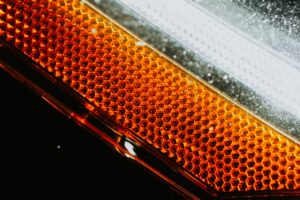13/08/2021
Following on from our earlier articles on the subject (1, 2), the issue of ‘plausibility’ continues to be a hot topic at the EPO.
This week, we learned that questions relating to the use of post-filed data/evidence (i.e. data/evidence provided after the priority/filing date of a patent or patent application) to support a technical effect will be referred to the Enlarged Board of Appeal (T 0116/18; EP2484209).
The questions included in the minutes are as follows:
If for acknowledgment of inventive step the patent proprietor relies on a technical effect and has submitted data or other evidence to proof such effect, such data or other evidence having been generated only after the priority or filing date of the patent (post-published data):
- Should an exception to the principle of free evaluation of evidence (see e.g. G1/12 reasons 31) be accepted in that the post-published data must be disregarded on the ground that the proof the effect rests exclusively on such post-published data?
- If the answer is yes (post-published data must be disregarded if the proof of the effect rests exclusively on these data): can post-published data be taken into consideration if based on the information in the patent application the skilled person at the relevant date would have considered the effect plausible (ab initio plausibility)?
- If the answer to the first question is yes (post-published data must be disregarded if the proof of the effect rests exclusively on these data): can post-published data be taken into consideration if based on the information in the patent application the skilled person at the relevant date would have seen no reason to consider the effect implausible (ab initio implausibility)?
In T1329/04 the Board held that even if supplementary post-filed evidence may in the proper circumstances also be taken into consideration, it may not serve as the sole basis to establish that the application solves indeed the problem it purports to solve. In other words, if the technical effect is not plausible at the priority/filing date e.g. if the disclosure in the application as filed did not make it plausible that this problem had been solved, post-filed evidence could not be used to remedy the deficiency.
A subsequent decision (T578/06) had suggested that the establishment of plausibility is only relevant when examining inventive step if the case at hand allows the substantiation of doubts about the suitability of the claimed invention to solve the technical problem addressed and when it is thus far from straightforward that the claimed invention solves the formulated problem. This decision appears to establish a low threshold for plausibility, i.e. it is prima facie plausible unless there is a good reason to suspect otherwise, such as a structural or mechanistic teaching away in the prior art. In this decision, the plausibility threshold was deemed to have been met, and so post-filed evidence could be taken into account to support inventive step.
A more recent decision (T 0488/16) appeared to set the plausibility threshold at a higher level. In the patent in question, there was no data in the application as filed supporting the efficacy of the claimed compounds, only a mere assertion: “Compounds described in the following Examples have been tested in one or more of these assays, and have shown activity”. This was not considered to be enough to meet the plausibility threshold, and so even though the proprietor had provided post-filed evidence showing that the technical problem had indeed been solved, it could not be taken into account.
In light of these earlier decisions, we would welcome an Enlarged Board of Appeal decision that clarifies the plausibility threshold, and when post-filed data can and cannot be taken into account.
It would also be interesting to see whether such principles would extend to sufficiency, particularly as the EPO Guidelines for Examination illustrate the relationship between inventive step and sufficiency. They state that if the claimed invention lacks reproducibility, this may become relevant under the requirements of sufficiency of disclosure or inventive step. If an invention lacks reproducibility because its desired technical effect as expressed in the claim is not achieved, this results in a lack of sufficient disclosure, which has to be objected to under Art. 83 (i.e. sufficiency). Since the technical effect is part of the solution proposed in the claim, it cannot be part of the problem underlying the application. Otherwise, i.e. if the effect is not expressed in the claim but is part of the problem to be solved, there is a problem of inventive step. Indeed, plausibility in the context of sufficiency was considered in the often-cited Salk (T 0609/02) case.
This article is for general information only. Its content is not a statement of the law on any subject and does not constitute advice. Please contact Reddie & Grose LLP for advice before taking any action in reliance on it.


